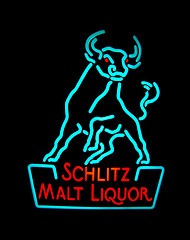Researchers Looking to Connect Malt Liquor Sales to Homicides.
Poor African American neighborhoods have more liquor stores per capita than comparative urban environments, and those stores sell and promote a lot more malt liquor. These neighborhoods also have higher homicide rates and researchers think there might be a connection between the consumption of malt liquor, and increased aggression.
Minnesota University researchers have systematically documented what a lot of people have been saying for years – that poorer African American neighborhoods have more liquor stores per capita, and far more malt liquor for sale.
Lead researcher, Rhonda Jones-Webb, explained that malt liquor is associated with binge drinking and aggressive behavior, and the study hoped to lay some documentary groundwork exploring the link between malt liquor and higher homicide rates in certain neighborhoods. The study received funding from the NIAA (National Institute on Alcohol Abuse and Addiction).
Malt Liquor, she explained was problematic because of its high alcohol content, its ready to drink out of the container nature, it's large serving size and its affordability. Researchers found that the average price of a 40 ounce bottle of malt liquor was just $1.87 – less than a gallon of milk, and very affordable for younger people.
The researchers found that poorer African American Neighborhoods in 10 selected cities across the country had a greater number of liquor stores per capita, that the average store had more malt liquor for sale, and that stores in poor African American neighborhoods were far more likely to prominently display and promote malt liquor.
Community activists have long witnessed the problems caused by alcohol abuse in poorer neighborhoods. Rev. Shaun Harrison, who works with inner city youth, says of his Boston community, "Start at the intersection of Dudley Street and Blue Hill Avenue and go all the way to Mattapan. . . . There's more liquor stores than churches."
Jones-Web concludes, "We need to ask ourselves why high alcohol content beverages, such as malt liquor, are more readily available and highly promoted in poor and minority neighborhoods, and how we can mobilize communities to implement effective policies to restrict their sale and promotion."


